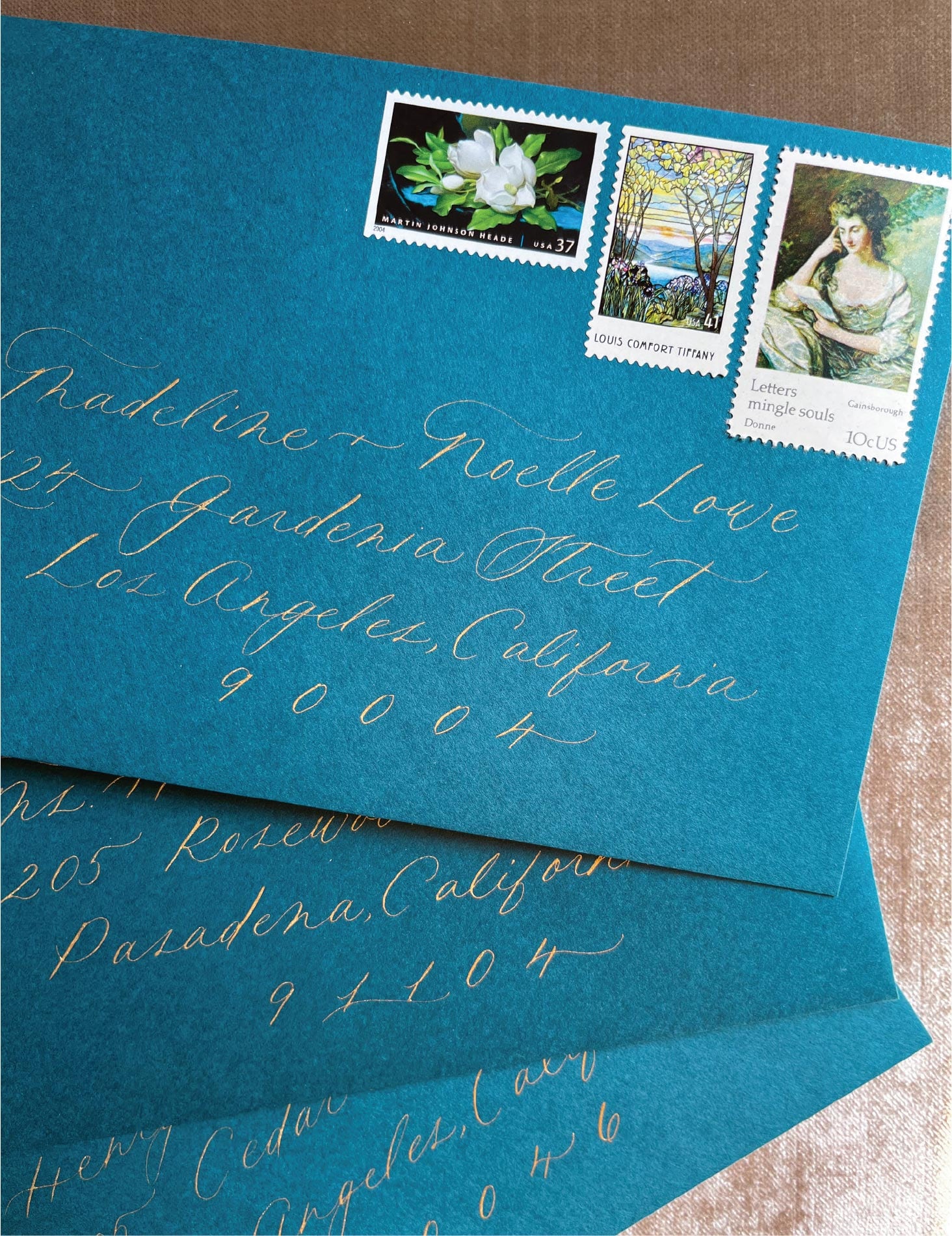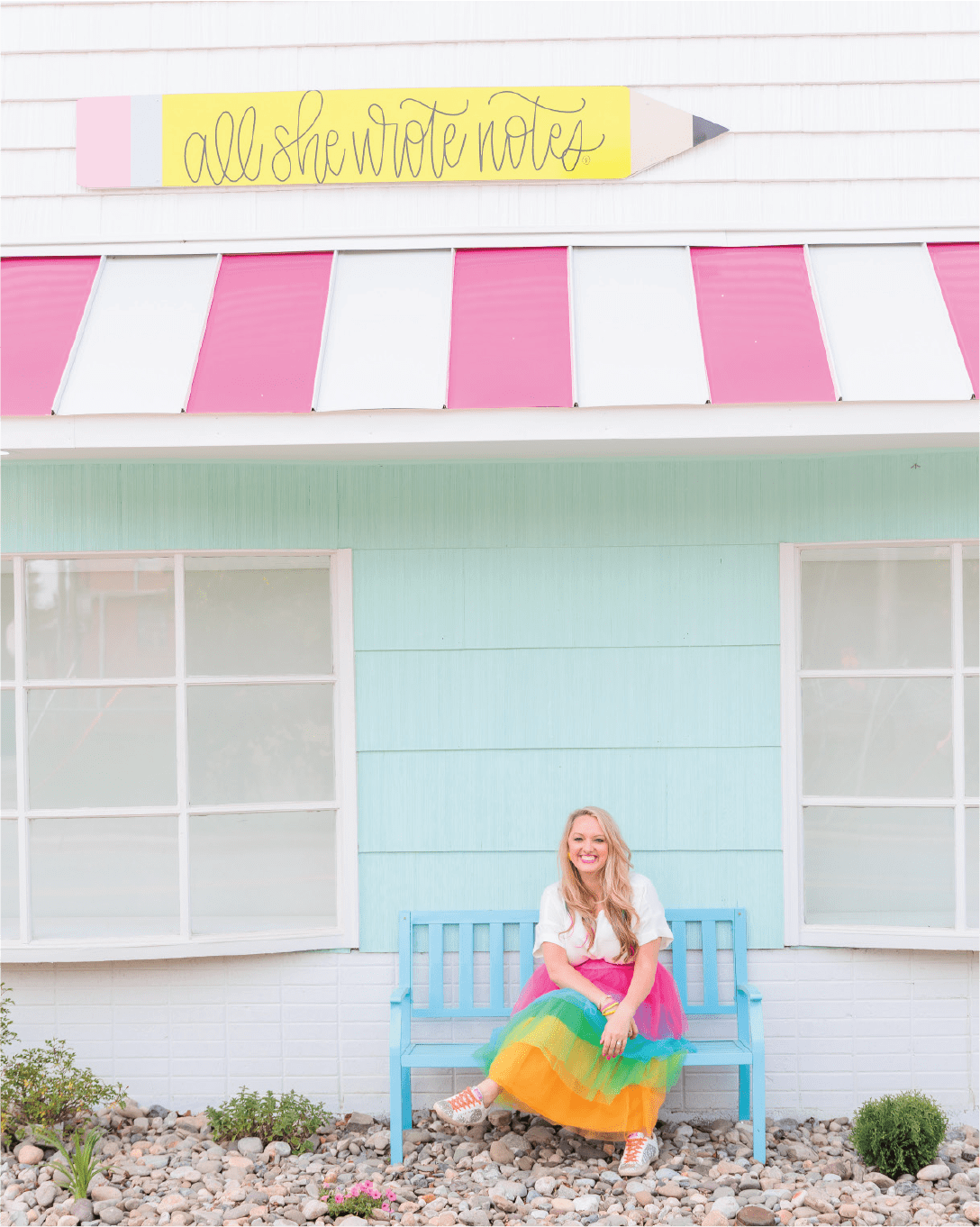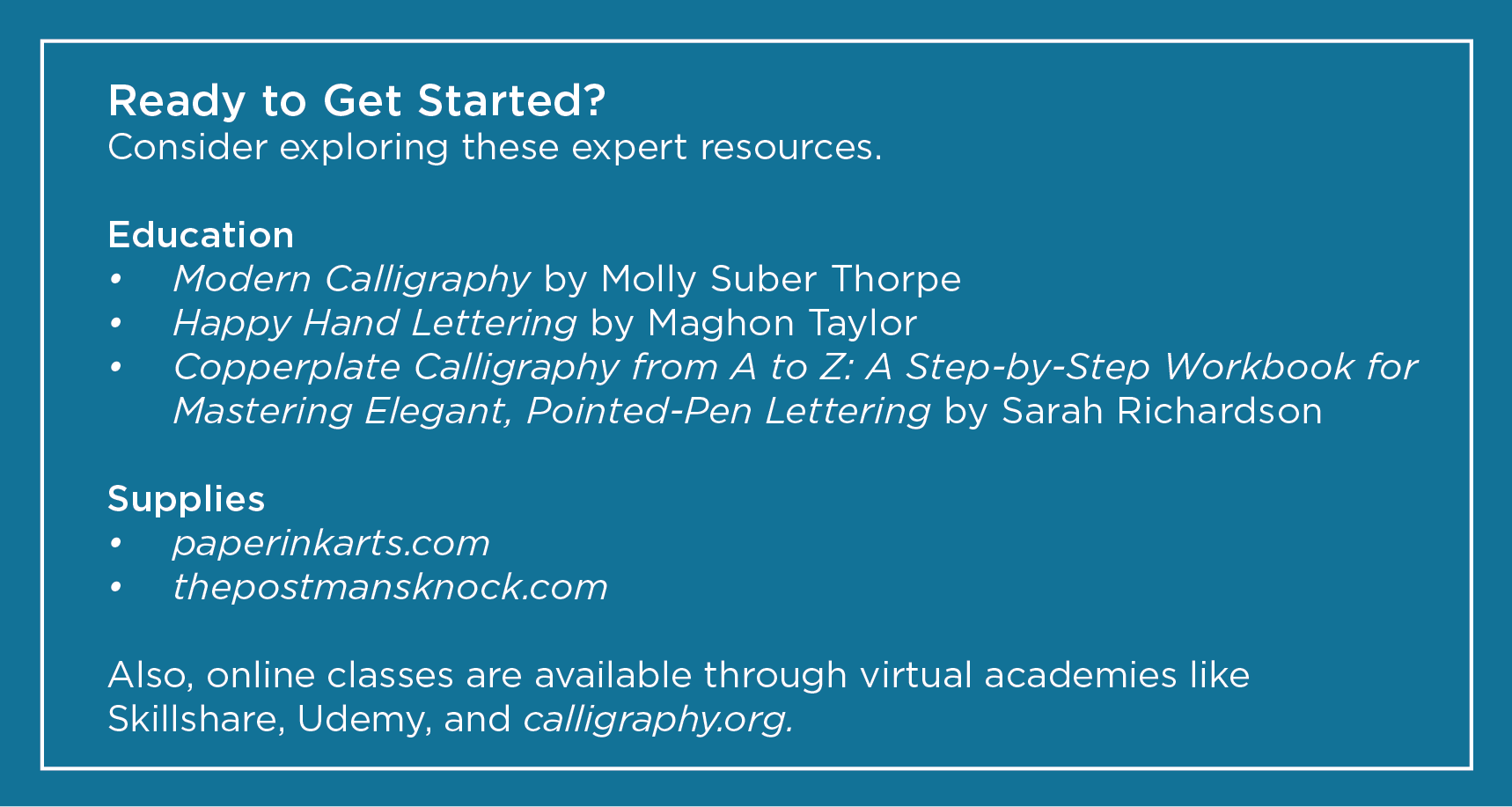The Art of Hand Lettering
An ancient art form around the world, calligraphy has stood the test of time. What began as a way to preserve historical and religious texts has become a form of personal expression now used in everyday life.
From diplomas on sheepskin to elaborate wedding invitations on heavy card stock, calligraphy has elevated the look and feel of documents and paper products for centuries.
The precision of calligraphy’s nib-to-ink process is part of its allure. “The basic definition of calligraphy is just beautiful writing,” says Carole Murray. Murray owns and operates a custom calligraphy business, Calligraphy by Carole, based in Winston-Salem, North Carolina. In recent years, demand for calligraphy services has grown rapidly across the country, with thousands of professional calligraphers now creating art and products in their own distinct styles.
Murray’s interest in calligraphy was first sparked in the 1980s when she wanted to address the envelopes for her wedding invitations. But it wasn’t until 2008 that she turned her hobby into a full-time job, focusing on the wedding industry. Murray offers products ranging from table numbers and place cards to invitations and large signage. Her work is based on the copperplate style, a method of writing that has existed for centuries.
If you’re learning calligraphy today, it is likely based on the copperplate script. The writing instrument—a nib—is dipped in ink and then whisked, dragged, or flicked across the page as necessary to achieve the desired effect. The fundamental techniques are upstrokes and downstrokes, which work together to create the shape and width of each letter.

Murray describes her process: “I use a pointed pen nib that fits into an oblique holder. I dip the nib into calligraphy ink. When I apply pressure on my downstrokes, the slit in the nib will open and separate the two tines, allowing the ink to flow out thicker. When I don’t apply much pressure— typically on the upstrokes—the lines are thinner.”
Something for Everyone
Another, perhaps more approachable, style is modern calligraphy, which some say requires less precision. Modern calligraphy can also be described as loopy calligraphy. Jess Perelle, owner of Letter and Ink in Los Angeles, California, uses this style in her full- service design studio. “Modern calligraphy is a more casual, free-form version of calligraphy,” she says.
Perelle has always been an artist and dates her interest in calligraphy all the way back to middle school. “I started a little business, writing people’s names in Crayola marker,” she says. “I do that now, but the fancy version.”
Today, her design work includes custom drawings, wax seals, and letterpress designs. Perelle is self-taught from the comfort of her coffee table through a combination of online videos, classes, and ample practice.
A Sense of Nostalgia
In part, calligraphy’s growing popularity may be attributed to a sense of nostalgia and society’s enduring feelings of delight around physical objects. In an increasingly digital world, it still feels good to turn the pages of a book or receive a handwritten note.
“When you get your mail, aren’t you looking for something that’s handwritten first?” says Murray. “People still like anything handwritten. If it’s written in calligraphy, that is even better.” Handwritten items carry a sense of human connection that printed materials cannot emulate.
Maghon Taylor of All She Wrote Notes, a calligraphy studio and classroom in Gibsonville, North Carolina, felt a similar connection when she inherited a calligraphy set from her grandmother. “I had always loved doodling and handwriting, so I wondered if I could learn. I signed up for a calligraphy class, and I was not good at all!” she says.
Taylor strayed away from the traditional copperplate style and practiced at home in her own way. She found the most joy and success in hand lettering, a whimsical style she has coined faux-ligraphy. With hand lettering, there’s flexibility to use pointed-tip markers in lieu of the traditional nib and ink, plus options to write on unconventional materials—like chalkboards, holiday ornaments, or signage—in addition to paper.
Handwriting and lettering can be just as much of an heirloom as jewelry or other possessions. “In a world where everything is text and email and digital, handwriting is such a legacy,” says Taylor. The market for reprinting and preserving the handwriting of loved ones has expanded rapidly in recent years. On sites like Etsy, you’ll find custom products that can include your loved one’s handwriting etched into jewelry; printed on tea towels; burned into cutting boards; or featured prominently on scrapbooks, ornaments, bags, coffee cups, and more.
“If I could have anything of my grandmother’s, it would be something with her handwriting,” says Taylor.

Just Put Pen to Paper
Taylor turned her interest in handwriting into a career. She now teaches classes in person and virtually, has written four books about calligraphy, and sells products of her own design through Walmart stores nationwide.
But calligraphy doesn’t have to be your passion to be fun and impactful, Taylor says. She encourages her students to simply start somewhere and get back to handwriting. “Don’t worry about perfection; just start writing again,” she says.
Especially for those who may be worried about shaky hands or handwriting changes that sometimes come with aging, hand lettering can be a more forgiving technique than the nib-and-ink approach. After all, a handwritten note is a treasure no matter what the writing looks like.
Also, handwriting is good for the brain. A study from the University of Tokyo suggests, “The act of physically writing things down on paper is associated with more robust brain activation in multiple areas and better memory recall.”
Murray agrees. “Your hand, after all these years, still knows what to do,” she says. Sometimes, the action of handwriting and modern calligraphy can even feel meditative.
“It’s really not like writing; it’s like drawing letters,” Murray says. “You get into a rhythm when you write, and it’s very therapeutic.”
These days, there are thousands of online classes available across the country, and most major cities have calligraphy groups that meet in person to practice together. Writing place cards for a dinner party and addressing an envelope to a friend are two simple ways to get started.
“Who doesn’t love to see their name written beautifully? It’s just a special touch,” says Murray. And it’s one that has endured for centuries.
